Chicken manure as fertilizer: types and rules of use
Any gardener knows that organic fertilizer necessary for the soil. But what kind of organic matter will enrich the soil in the best way, not everyone knows. Chicken manure ranks first among organic fertilizers in terms of the concentration of nutrients and their diversity. Many people equate bird excrement in composition with complex mineral preparations. It is so rich and useful for soil and plants.
However, the fertilizer must be applied with extreme care. Having learned how to dose the "vitamins" of the earth and bring them in in a timely manner, the crops will give a bountiful harvest, and the flowers will delight with lush flowering. About why chicken droppings are so useful, how to use it correctly, the gardener will learn from this handbook for the grower.
Content:
- Chicken droppings - why is so useful?
- Application of chicken manure
- Fertilizers
- Crop introduction rules
- Precautions
Chicken droppings - why is it so useful?
The fertilizer contains nitrogen, potassium, phosphorus, calcium and many other trace elements. The main difference chicken droppings from cattle manure is the concentration of compounds useful for plants. Moreover, it includes elements that are not found in cow or horse manure. When making fertilizers into the soil, the plants begin to develop instantly and grow much better. Moreover, this is noticeable already 4-5 days after soil enrichment. Fertilizing the land with cattle manure such a quick effect is not observed.
Chicken droppings can be used to fertilize almost all crops and soils.
The main advantage of fertilizer is its concentration of nutrients and the ability to saturate the soil with them for several years. That is, chicken manure is not washed out and does not decompose quickly. He gives the plants useful elements for a long time and systematically. So, having introduced fertilizer into the soil, you no longer have to worry that next year the crops will lack something. Due to the high concentration of substances, chicken manure is spent many times less on enriching the land than cow or horse manure.
This fertilizer is also easier to obtain than cattle droppings. Many keep chickens on the site - there are no problems with fertilization. For those who do not have such an opportunity, chicken droppings can be purchased for next to nothing or free of charge at poultry factories. Or buy in specialized stores. Fortunately, a very small amount of fertilizer is needed to enrich the land.
If you have to choose between organic fertilizers, it will be more expedient to give preference to chicken manure. The best option would be a combination of organic matter - cattle manure and poultry manure.
Application of chicken manure
Fertilizer is used to enrich the soil. More often, the introduction is carried out in the fall for plowing. Chicken droppings are intended for feeding vegetable crops and fruits and berries. Often it is brought under ornamental shrubs and trees. Care should be taken when applying fertilizer to onion or garlic... It is better to feed these crops before planting. Fertilizer is rarely used in its pure form.
Usually it is brought in in the fall for plowing in such a way that by the spring the concentration, which is dangerous for plants, has already re-melted and thoroughly mixed with the ground.
For plant nutrition, fresh manure in its pure form is not used. It is mixed with water and left for several days. The resulting concentrate is further diluted with water in a ratio of 1:20. This solution is used to fertilize the soil.
Fresh litter is best used for organization compost heap.
- The fertilizer is laid in layers, alternating with straw, sawdust and vegetable waste.
- In a year or two, humus will arrive in time - the best and most effective fertilizer.
- Such a heap is organized on wooden pallets, it is necessarily covered with a film for faster fermentation of droppings and rotting of plant waste.
Overripe litter is used more often. It is no longer so "burning" for plants, but it contains no less useful substances than fresh. It is introduced into the soil when planting or in the fall for plowing. Overripe droppings are mixed with sawdust or straw. The resulting mixture is added to the root. It is better to dilute both fresh and rotted chicken manure with water if feeding is planned root system plants. The soil must be spilled with water before and after application fertilizers... The measure will avoid burning the root system - this is a general rule when applying any fertilizer.
Fertilizers
Chicken droppings are classified into several types depending on the degree of decomposition. There are different forms of fertilizer release, which also depend on the degree of readiness of the manure.
Distinguish:
- Fresh chicken manure - used for introduction into the soil in autumn with subsequent plowing.
- Overripe droppings - used for feeding vegetables and fruit and berry crops, applied at the root in dry form or diluted with water.
- Semi-ripe fertilizer - applied mainly to the soil, followed by plowing. It is mixed with straw or sawdust and introduced into the soil, which is thoroughly plowed.
- Mixed type of droppings - fresh droppings mixed with straw, peat and plant residues. It is used to organize a compost heap, which after a year or two discussions gives the most useful and effective humus to be applied to the soil.
As for the form of fertilizer release, there are dry granules of chicken manure, powder or liquid solution - concentrate. Gardeners prefer dry granules, as they have been heat treated by the manufacturer and do not have a specific odor. They are used both dry and in the form of an aqueous solution. Fertilizer in this form is safe and will not burn the root system of the plant if applied according to the instructions provided.
Fertilizer in liquid form should be additionally diluted with water.
The ratio is 1:10 or 1:20 depending on concentration and culture. Chicken manure in any form and form is used in small quantities, so as not to harm the plants. Fertilization rates depend on the degree of decomposition. However, there are general rules for fertilizing the soil for certain crops.
Crop introduction rules
It is immediately worth noting the peculiarity of fertilizing in potatoes... The fact is that chicken droppings are not quite suitable for this culture. She needs potassium, and it needs to be introduced into the culture. Otherwise, there are no restrictions on the use of a chicken.
The most common method of soil enrichment is liquid fertilization.
This will require fresh droppings. It is placed in a barrel about half or even slightly less. Pour it with water and cover for 5-7 days. After a week fertilizer will be ready to use. However, the concentrate should be diluted 1:20. This solution is applied to the soil so that the liquid does not touch the root collar of the plant. Before fertilizing, the earth must be spilled with water.
Liquid fertilizer:
- The approximate consumption of liquid fertilizer is 2-3 buckets per standard bed.Top dressing is best done in the spring before planting and after during the growing season.
- In order to correctly determine the degree of dilution of the concentrate, be guided by the color of the solution. It should be light brown, not dark. The brighter the solution, the safer its concentration for plants. The color should be like highly diluted tea.
- In vegetable crops, 3-5 liters are applied per 1 sq. m. Onion and garlic - 1 liter per 1 sq. m. Tomatoes and pumpkin respond well to this fertilizer. In these cultures, you can make 5 liters per 1 sq. m. Tomatoes will be large and juicy.
Fresh manure:
- Fresh manure in pure form is applied only in autumn, followed by plowing. The ratio is 2 kg per 1 sq. m.
- Vegetable crops are often fed with a liquid solution. The prepared concentrate is diluted again with water in a ratio of 1:20. One plant takes at least 1 liter of solution.
Dry litter:
- Dry manure or well-rotted manure is introduced into the soil in pure form or mixed with water.
- Fruit trees are fed with rotted droppings mixed with straw or sawdust - 2 kg per tree. Fertilizer is distributed in the trunk circle.
- Fruit can also be fed with a liquid solution - 0.5 liters per tree.
- Shrubs are fed 1 kg of rotted droppings per bush or 0.5 liters of liquid solution diluted in a ratio of 1:25.
- Vegetable crops - 2-3 kg per 1 sq. m. with subsequent digging or mixing with soil in the hole during planting.
Litter:
- In addition to chicken droppings, chicken coop bedding is also used. It contains little fertilizers and therefore is considered completely safe to use.
- The litter is applied to the soil for vegetables, trees, shrubs, fruit and berry plants. This type of fertilizer can be applied without fear of harming plants and burning the root system.
- However, it is better to mix the litter with earth or soak it with water. As for the ratio, in the case of bedding, the dose is doubled, since such fertilizer does not contain a lot of chicken manure.
- Trees and shrubs - 3-4 kg per 1 sq. m, vegetables - 2-4 kg per 1 sq. m.
When using chicken manure as a fertilizer, always remember to apply less rather than more. If you are not sure, dilute the fertilizer in a higher dose than indicated on the package. Chicken droppings will give the plants what they need anyway. The fertilizer has a prolonged action.
Precautions
When working with fertilizer, be sure to use gloves and special clothing. Chicken droppings, especially fresh, are very toxic and have a pungent odor. In order to prevent odor and toxins from getting on the skin, special. clothes and gloves. Those who cannot stand strong odors recommend using a mask.
Such a specific feature of the fertilizer is often related to its only disadvantage. Place the barrel intended for the process of fermenting fresh droppings in the farthest corner of the site so that the smell does not spread throughout the territory. Close the container tightly with a lid, and on top with a film.
Correct application of chicken manure as fertilizer will help the gardener grow an excellent harvest and enrich the soil.
Remember all the general rules for use fertilizers... So on the site, lush and juicy greens of ornamental plants will always grow, and vegetable crops will delight with tasty and large fruits!
More information can be found in the video.



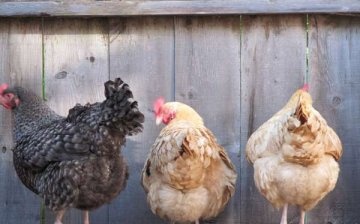
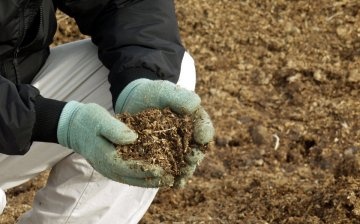

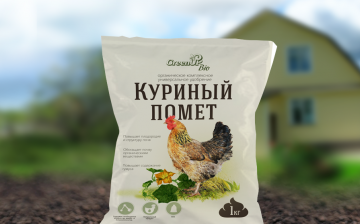
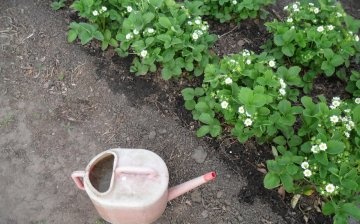
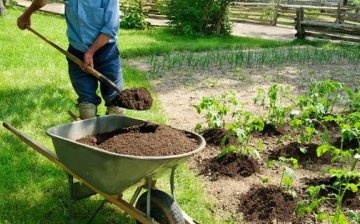








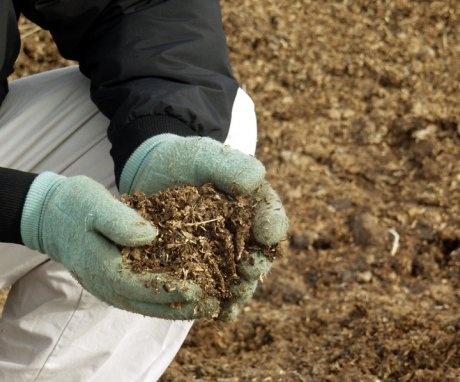
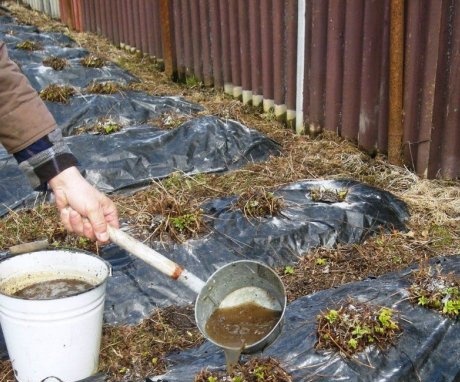
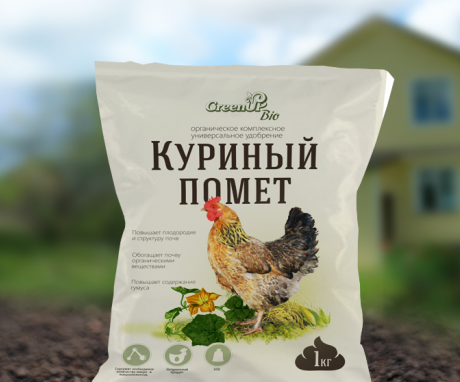
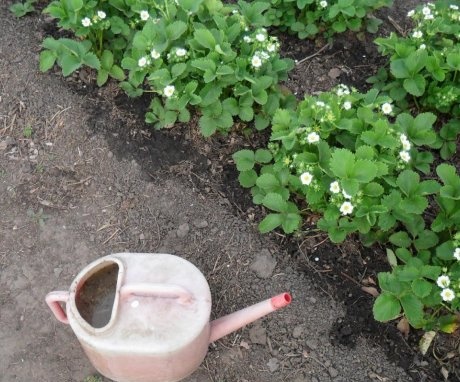
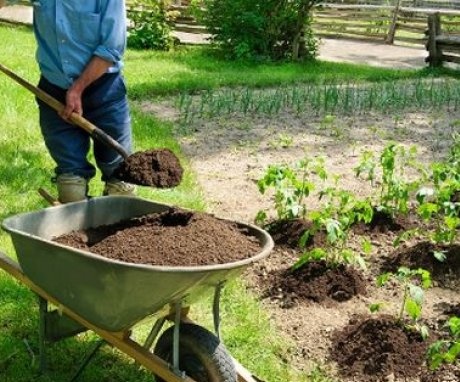
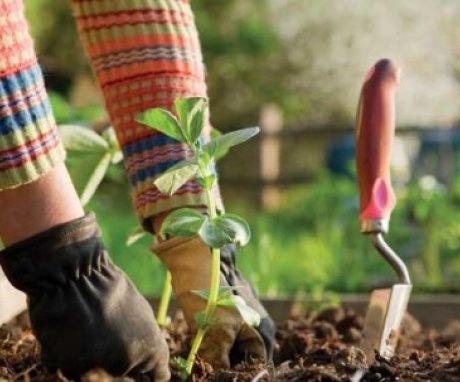
Chicken manure is a very good fertilizer for vegetable crops, but it must be applied carefully so as not to harm the plants. It is better to make the fertilizer concentration a little less than a little more, and burn the vegetables.